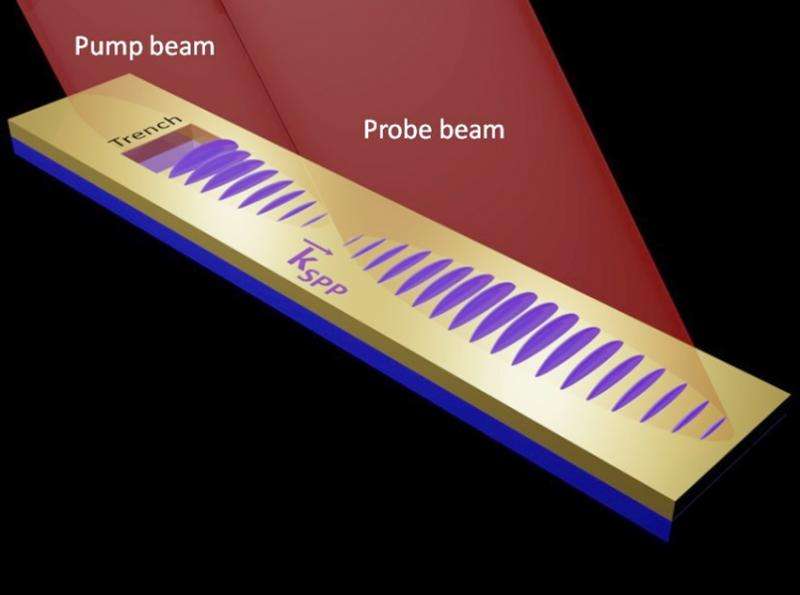Surface plasmons move at nearly the speed of light and travel farther than expected

Light waves trapped on a metal's surface, called surface plasmons, travel farther than expected, up to 250 microns from the source. While this distance is just one-hundredth of an inch, it is far enough to possibly be useful in ultra-fast electronic circuits. Scientists captured the surface plasmons' travel on video.
Future computer circuits could use this phenomenon as interconnects. Because a surface plasmon travels at near the speed of light, computer circuits with this technology could operate at much faster speeds than current electronics.
Everyone knows that light can pass through transparent materials, such as glass. Metals, on the other hand, reflect and block light very efficiently. However, specially designed, extremely small metal structures can trap light. Once trapped, the light becomes a confined wave known as a surface plasmon. The plasmons can propagate almost as fast as light through the air. Researchers at Pacific Northwest National Laboratory experimentally showcased the unique ability to study a surface plasmon. In their experiments, the team applied two laser pulses to a gold sample surface: the first is called the pump, while the second is called the probe. The pump is used to generate the surface plasmon and is followed by the probe on a time delay, which detects the surface plasmon. By continuously tuning the time delay between the pump and probe pulses, the team monitored the motion of the plasmon on the gold surface. They captured the confined waves propagating on video, helping to directly extract details such as wavelength and speed. They also determined that a propagating plasmon can be detected at least 250 microns away from the generation source, meaning it can travel far enough to be useful in electronic circuits.
This finding opens up the option for ultra-fast computers, as well as devices in the biological, health, and energy arenas.
More information: "Ultrafast imaging of surface plasmons propagating on a gold surface. Nano Letters 15, 3472-3478 (2015). DOI: 10.1021/acs.nanolett.5b00803
Journal information: Nano Letters
Provided by US Department of Energy




















